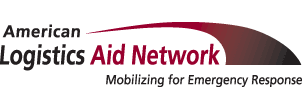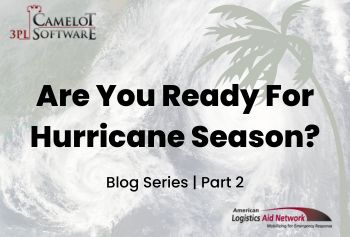Ever been on the beach on a nice sunny day and get a text alert that there’s an incoming storm, but the sun’s out and the weather is beautiful? It always seems to happen when you’re on vacation and a storm comes out of nowhere. How do you stay informed about inbound weather? As my former neighbor and local Charlotte Meteorologist Brad Panovich always says “Be Weather Aware”.
These days there are a plethora of tools to keep you informed about immediate weather or long-range weather forecasting. Sometimes the difference between serious injuries and significant damage vs minimizing potential for injury is a matter of timely information. You should always have several channels to receive the latest information. Staying informed is your best defense so you know which plan of action to take, and when.
What happens if you react too soon? A large storm system may miss you and you might take up valuable resources that other evacuees need. If you react too late? You’ll be caught in the storm that you were trying to avoid in the first place, thus creating additional requirements for first-responders who may need to risk their lives to save you. So it’s not just about knowing the forecast, but having timely information that helps you make decisions rapidly. This week’s blog will provide you with various tips for staying “weather aware”.
Geoff Greenhill, Director of Sales, Camelot 3PL Software
Whoever said, “What you don’t know can’t hurt you,” clearly never dealt with hurricanes, because when it comes to these destructive storms, ignorance isn’t bliss, it’s dangerous.
It’s also unnecessary, because over the past several decades, various public and private organizations have become increasingly proactive about (and proficient in) sharing critical information about each named storm.
The key is knowing how to find them, which is why we’d like to use this blog to point you in the direction of several resources that will do an excellent job of keeping you in the loop – and keeping you safer – during Hurricane Season 2023.
National And State Resources
If you have business operations in or near a hurricane-prone area, you probably already have a robust list of go-to local outlets that you and your employees rely on for updates.
Don’t throw away that list. But DO consider augmenting it with some of the many federal or state organizations that are working round the clock to bring you updates and ensure you stay informed in the event of an emergency, including:
- The National Hurricane Center and National Weather Service, both of which offer real-time forecasts and other details
- The FEMA Mobile App
- https://www.ready.gov/, which offers a comprehensive list of readiness tips, emergency planning items and related disaster-ready resources
Additionally, if you’re one of the many people who have disabled the wireless emergency alert (WEA) feature on your phone – perhaps because it gave one loud, unexpected beep too many – take the time to re-enable it right now. While you may find this feature more bothersome than useful, trust us when we say that it comes enabled for a reason: to provide you with instant warnings about potentially life-threatening situations in your vicinity that you might otherwise not hear about in time.
ALAN Resources
Here at ALAN, we’re huge fans of all these channels and tools, which is why we frequently re-share their important weather updates via our social media channels. In light of that, we encourage you to follow us at @alanaid.
Just as important, we invite you to bookmark the Disaster Micro-Site section of our website, because it features several additional hurricane-readiness resources like:
- Weather alerts and public safety
- FEMA’s Preparedness Toolkit
- FedEx and UPS service alerts
- Recommendations for safely becoming involved with disaster recovery efforts
And speaking of additional resources…
Real-Time Visibility
No overview of hurricane readiness tools would be complete without reminding you about ALAN’s Supply Chain Intelligence Center. It’s a cutting-edge technology that provides you with the opportunity to view:
- Real-time updates on severe weather, including the charted path of hurricanes and tropical storms
- Supply chain impacts such as road, port, and airport closures
- Updates on shared infrastructure
And like every other website, organization or tool we’ve mentioned in this article, it’s free.
It sounds too good to be true, but it really isn’t, so we hope you’ll consider registering for it today. Powered by our partners at Everstream Analytics, ALAN’s Supply Chain Intelligence Center serves government, non-profit and private sector agencies alike by keeping them informed. In doing so, both public and private sectors are better equipped to navigate disasters and facilitate recovery efforts.
Next Steps
We hope you’ll find these recommendations helpful. Just as important, we hope you’ll consider looking into one or more of them. Staying more informed about hurricanes can be as simple as searching for some of the above accounts and clicking “follow.” Plus, keeping others informed could be as easy as sharing this blog with your employees or other business colleagues so that they can do the same. When we do our part to stay updated and assist others in strengthening their knowledge of available resources, our communities become more resilient.
Thanks for reading. Tune in next week for the third installment of our Hurricane Preparedness blog series. And feel free to contact us if you have any questions or want to share your own tips for staying informed.
The ALAN Team





